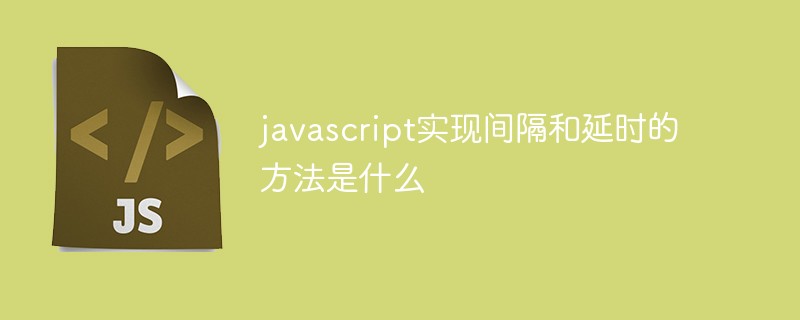Home >Web Front-end >JS Tutorial >What is the method to implement interval and delay in javascript
What is the method to implement interval and delay in javascript
- 青灯夜游Original
- 2021-06-22 14:19:314136browse
In javascript, you can use the timer setInterval() method to achieve interval and delay effects. This method is used to cyclically call functions or calculate expressions according to a specified period (in milliseconds), syntax format "setInterval('code string or function to be called', number of milliseconds)".

The operating environment of this tutorial: windows7 system, javascript version 1.8.5, Dell G3 computer.
In javascript, you can use the timer setInterval() method to achieve interval and delay effects.
Example: "Hello" pops up after a delay of 3 seconds (3000 milliseconds)
<!DOCTYPE html>
<html>
<head>
<meta charset="utf-8">
</head>
<body>
<p>点击按钮,3 秒后会弹出 "Hello"。</p>
<button onclick="myFunction()">点我</button>
<script>
function myFunction() {
setTimeout(function(){ alert("Hello"); }, 3000);
}
</script>
</body>
</html>Instructions:
setInterval() method can be followed The specified period (in milliseconds) to call a function or evaluate an expression.
The setInterval() method will continue to call the function until clearInterval() is called or the window is closed. The ID value returned by setInterval() can be used as an argument to the clearInterval() method.
Syntax
setInterval(code,millisec[,"lang"])
| Parameters | Description |
|---|---|
| code | Required. A function to be called or a string of code to be executed. |
| millisec | Must. The time interval, in milliseconds, between periodic executions or calls to code. |
Return value: A value that can be passed to Window.clearInterval() to cancel the periodic execution of code.
Example:
<!DOCTYPE html>
<html>
<body>
<div id="clock"></div>
<script language=javascript>
var int=
self.setInterval("clock()",50)
function clock()
{
var t=new Date()
document.getElementById("clock").innerHTML=t
}
</script>
</form>
</body>
</html>Rendering:

The above is the detailed content of What is the method to implement interval and delay in javascript. For more information, please follow other related articles on the PHP Chinese website!
Related articles
See more- How to solve javascript void0
- How to convert characters to array in javascript
- What should I do if the Chinese characters displayed by JavaScript are garbled?
- How to check whether the IP address is legal in javascript
- How to get request parameters in javascript
- How to remove header and footer in javascript

